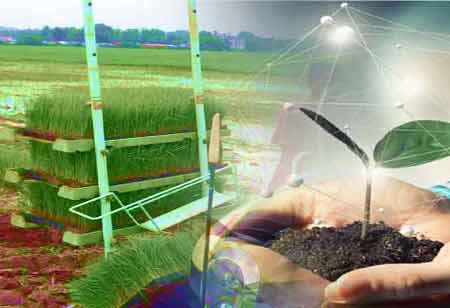Thank you for Subscribing to Agri Business Review Weekly Brief
Automated Agriculture Technique for Accurate and Increased Crop Yielding
Agriculture is the key driving factor in an economy, where implementing automation-driven roles offers varied integrated advantages in the arena globally, enabling effective crop growth.

By
Agri Business Review | Thursday, March 09, 2023
Stay ahead of the industry with exclusive feature stories on the top companies, expert insights and the latest news delivered straight to your inbox. Subscribe today.
An AI-driven automated agriculture technique maximised the crop production output, with accurate image recognition, and proven skills and workforce.
Agriculture is the key driving factor in an economy, where implementing automation-driven roles offers varied integrated advantages in the arena globally, enabling effective crop growth. For instance, deploying artificial intelligence (AI)-based technologies in the agriculture domain enables improving crop efficiency in all fields, thereby assisting in the critical management of challenges in the sector—crop yield, irrigation, soil content sensing, crop monitoring, weeding, and crop establishment.
Deploying agricultural robots helps in delivering high-value applications of AI in the agricultural space, especially in tackling soaring global population demand and crises. AI holds an induced potential in delivering critical solutions for agricultural businesses, enabling farmers to produce increased outputs with improved quality, thereby ensuring rapid go-to-market for the yielded crops. As a result, the future of the agriculture zone will critically uphold an average of 75 million connected devices to be utilised by the farmers, with an anticipated generation of 4.1 million data points daily.
For instance, leveraging artificial intelligence in the agricultural sector facilitates acute image recognition and perception. Elevated interest in autonomous unmanned aerial vehicles (UAVs) and their applications—recognition, surveillance, human body detection, geolocalization, search and rescue, and forest fire detection—has been widely noticed in recent years.
Alongside this, drones and UAVs are critical in gaining momentum to reach great heights and distances, carrying out several applications per the versatility and groundbreaking imaging technology to cover everything from delivery to photography, piloted with a remote controller and devices with dexterity in the air. This, in turn, favours an increased potential to enable varied integrated methods via devices.
An AI-enabled agricultural pattern assists farmers in assembling large amounts of data from government and public websites, analysing them, and proffering them to farmers with enhanced solutions. This, in turn, aids in addressing ambiguous issues in the arena, enabling a smart way of doing irrigation, and offering high yields to farmers. Moreover, an AI-driven agricultural sector upholds an enhanced future in farming processes, serving a much better outcome in quality while minimising losses and workloads.
Various researchers have elucidated that nearly 66.66 per cent of the world's population will live in urban areas in the future, implying that demand for farmers will critically escalate. Hence, an automated agricultural concept reduces risks for farmers, enabling easy and efficient farming techniques.
Variety selection and seed quality often set a maximum performance level for all plants. Wherein, implementing emerging technologies in the sector favours crop selection with an improved selection of hybrid seed choices that suit typical farmers’ needs.





